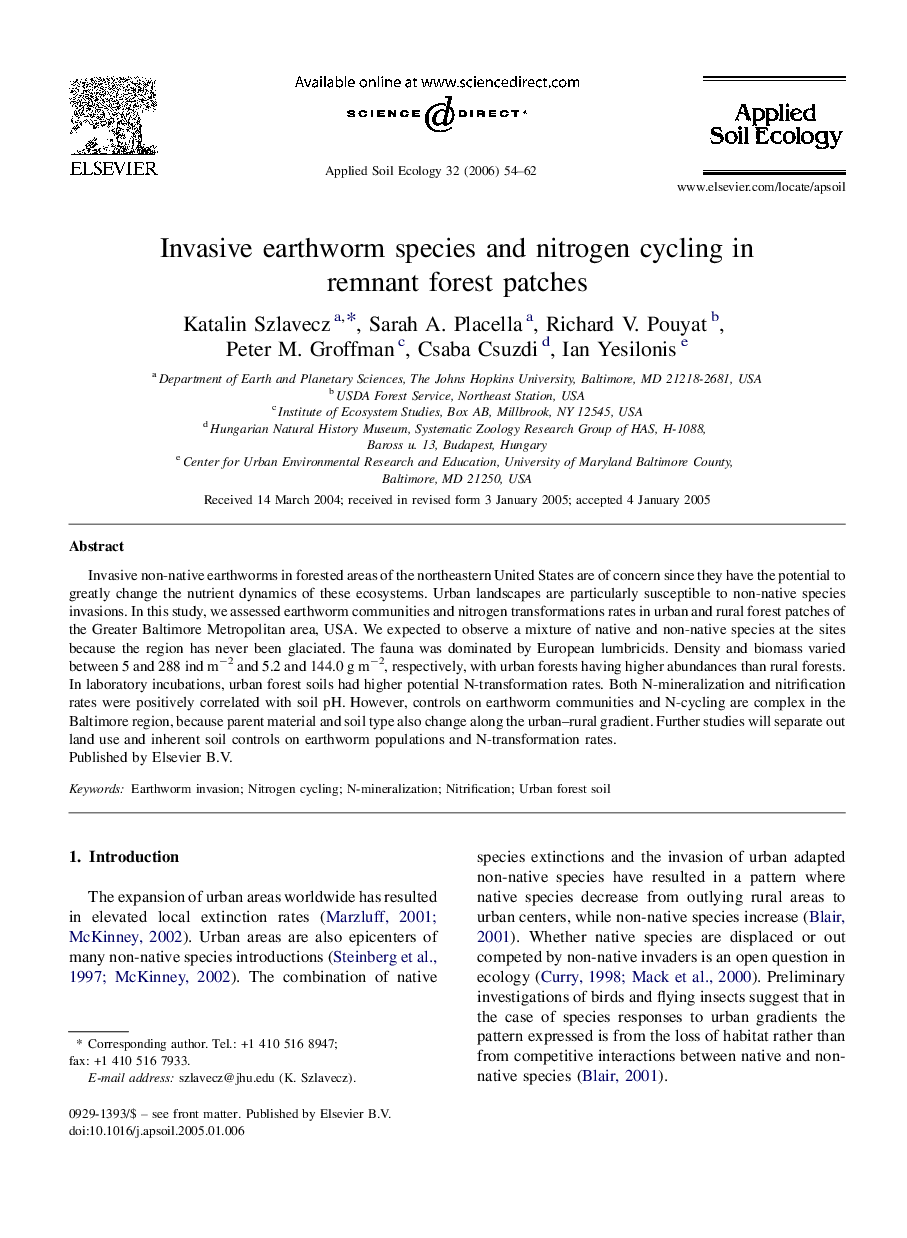| Article ID | Journal | Published Year | Pages | File Type |
|---|---|---|---|---|
| 4383338 | Applied Soil Ecology | 2006 | 9 Pages |
Abstract
Invasive non-native earthworms in forested areas of the northeastern United States are of concern since they have the potential to greatly change the nutrient dynamics of these ecosystems. Urban landscapes are particularly susceptible to non-native species invasions. In this study, we assessed earthworm communities and nitrogen transformations rates in urban and rural forest patches of the Greater Baltimore Metropolitan area, USA. We expected to observe a mixture of native and non-native species at the sites because the region has never been glaciated. The fauna was dominated by European lumbricids. Density and biomass varied between 5 and 288 ind mâ2 and 5.2 and 144.0 g mâ2, respectively, with urban forests having higher abundances than rural forests. In laboratory incubations, urban forest soils had higher potential N-transformation rates. Both N-mineralization and nitrification rates were positively correlated with soil pH. However, controls on earthworm communities and N-cycling are complex in the Baltimore region, because parent material and soil type also change along the urban-rural gradient. Further studies will separate out land use and inherent soil controls on earthworm populations and N-transformation rates.
Related Topics
Life Sciences
Agricultural and Biological Sciences
Ecology, Evolution, Behavior and Systematics
Authors
Katalin Szlavecz, Sarah A. Placella, Richard V. Pouyat, Peter M. Groffman, Csaba Csuzdi, Ian Yesilonis,
